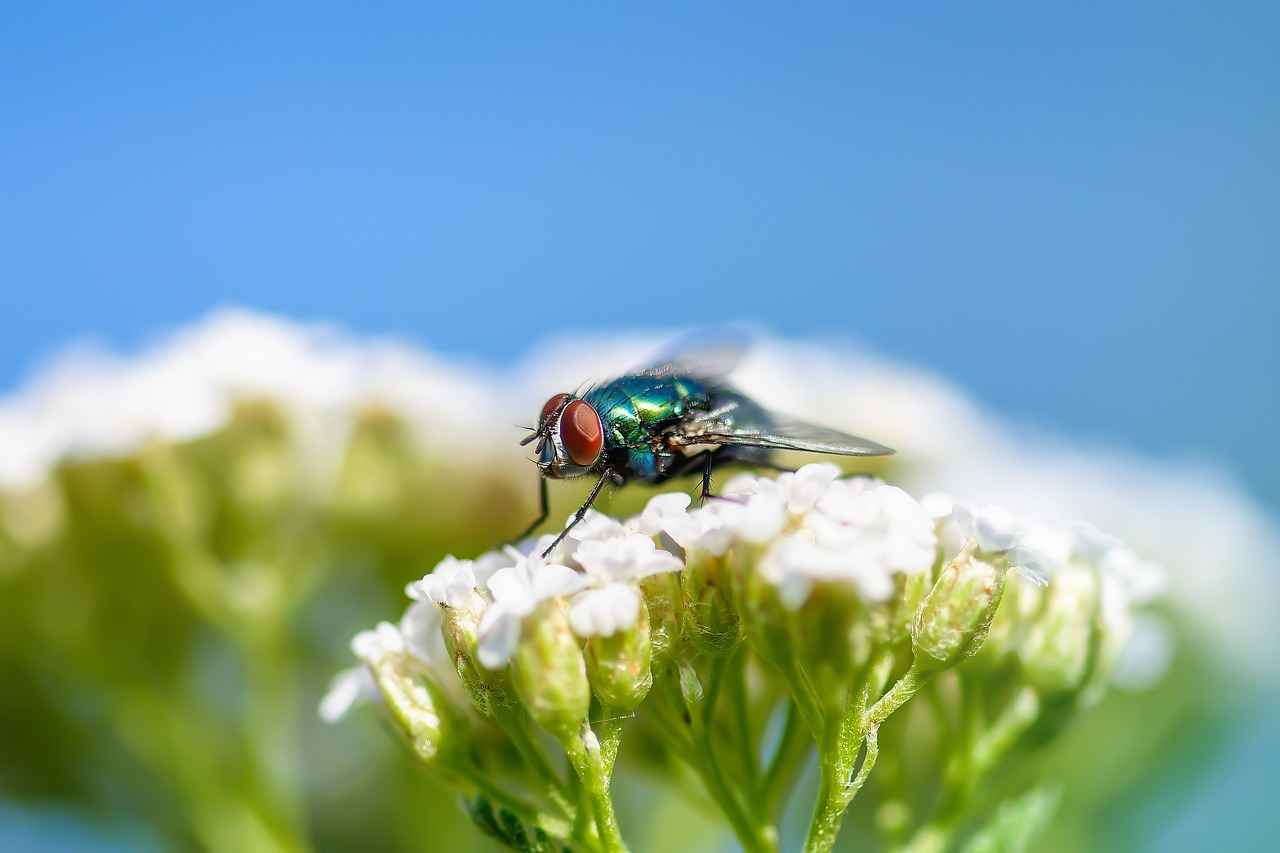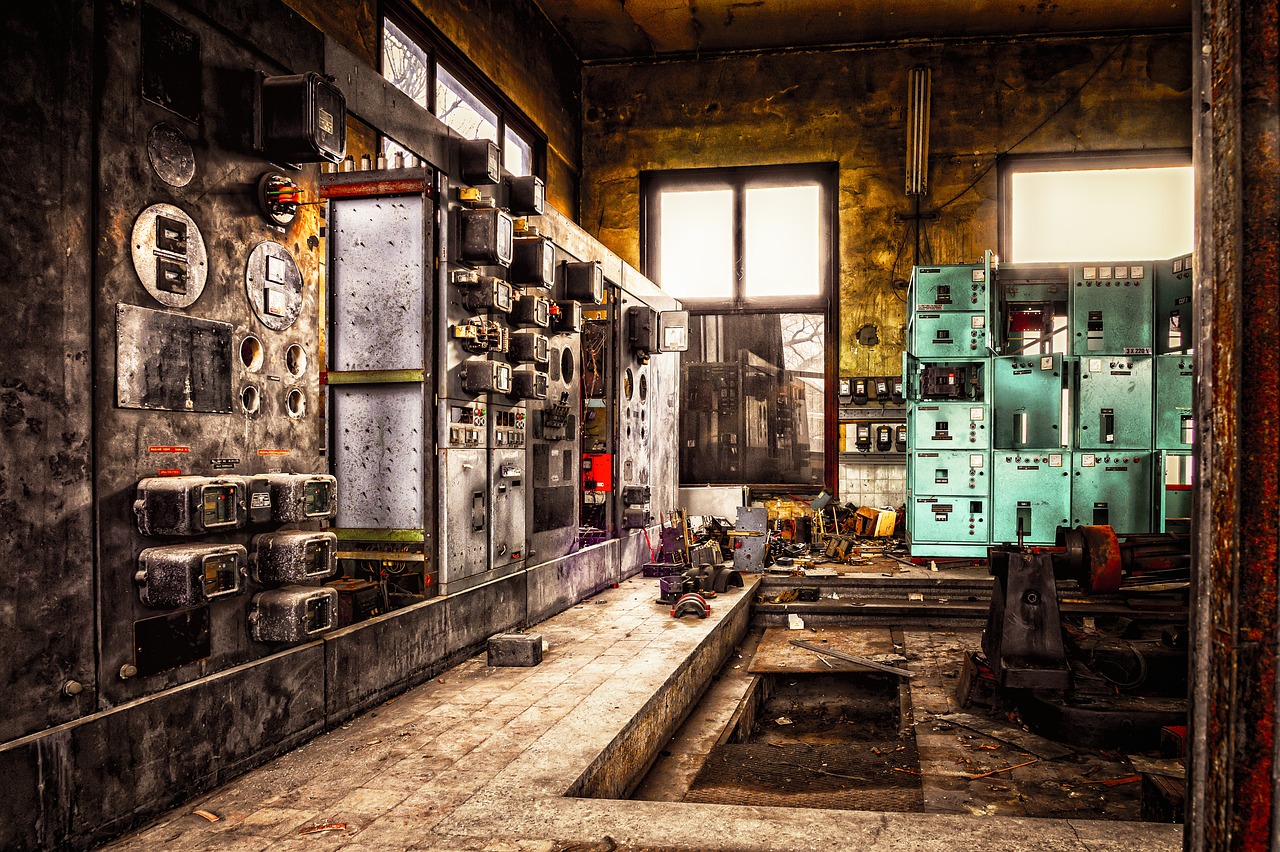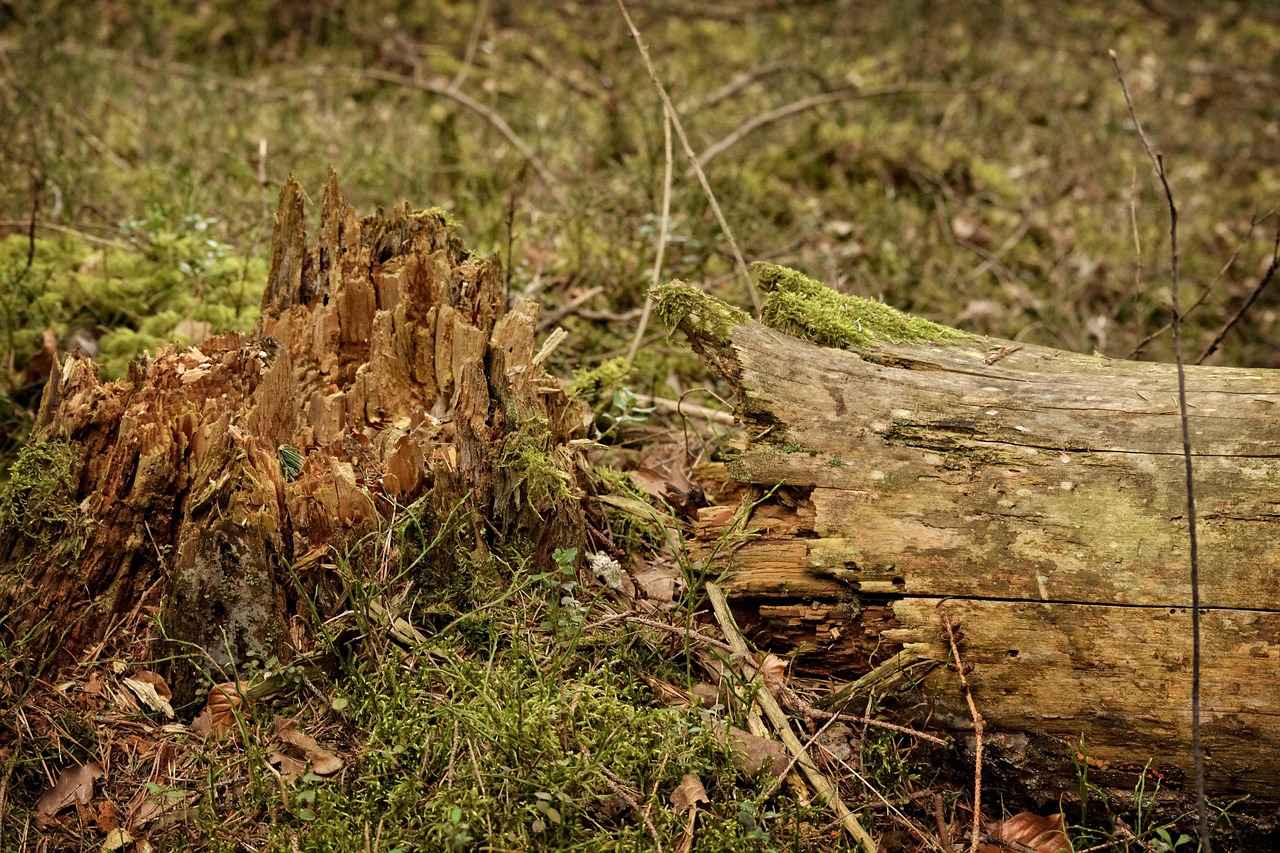This article provides a comprehensive guide on effectively cleaning a vacant apartment of pests, covering essential methods, preventive measures, and expert tips to ensure a pest-free environment.
Why is Pest Control Essential in Vacant Apartments?
Understanding the importance of pest control in vacant apartments is crucial for several reasons. Firstly, it helps prevent infestations that can lead to significant damage and costly repairs. Secondly, maintaining a pest-free environment protects the property value, ensuring it remains attractive to potential tenants. Lastly, a clean and pest-free apartment promotes a safe living space, which is essential for future occupants.
What Are Common Pests Found in Vacant Apartments?
Identifying common pests is vital for effective pest control. Here are some typical pests found in vacant apartments:
- Rodents: Mice and rats are notorious for invading empty spaces, often leaving droppings and gnaw marks.
- Cockroaches: These resilient insects can thrive in unattended apartments, often hiding in dark crevices.
- Bedbugs: Although they prefer occupied spaces, bedbugs can linger in furniture and appliances.
Effective Cleaning Strategies for Rodent Control
Recognizing signs of rodent infestations is vital. Look for droppings, gnaw marks, and nests. Preventive measures include:
- Sealing entry points: Close off holes and cracks to deter rodents from entering.
- Maintaining cleanliness: Regularly clean and declutter to eliminate potential hiding spots.
Effective Traps and Baits
Using the right traps and baits can effectively reduce rodent populations. Consider:
- Snap traps: These are quick and effective for catching rodents.
- Bait stations: These can lure and kill rodents safely.
Professional Extermination Services
In severe cases, hiring professional exterminators may be necessary. They can provide targeted treatments and long-term prevention strategies tailored to your specific pest problem.
How to Deep Clean a Vacant Apartment
Deep cleaning is essential for eliminating pests and their habitats. Follow these steps for a thorough cleaning process:
- Gathering the Right Cleaning Supplies: Ensure you have disinfectants, pest control products, and cleaning tools ready.
- Step-by-Step Cleaning Process: Start with vacuuming, then scrub surfaces, focusing on potential pest hotspots like kitchens and bathrooms.
What Preventive Measures Can Be Taken Post-Cleaning?
Implementing preventive measures after cleaning is vital to maintain a pest-free environment. Consider the following strategies:
- Sealing Entry Points: Close gaps in walls, windows, and doors to minimize pest access.
- Regular Maintenance and Inspections: Schedule periodic checks to catch any early signs of pest activity.
When Should You Consider Professional Help?
Knowing when to seek professional pest control services is crucial for effective management. Signs that indicate the need for expert intervention include:
- Signs of Severe Infestation: If you notice significant droppings or nests, it’s time to call in professionals.
- Choosing the Right Pest Control Service: Research their methods, certifications, and customer reviews to ensure quality service.
By following these comprehensive guidelines, you can effectively clean a vacant apartment of pests and implement strategies to prevent future infestations. A proactive approach will not only protect your property but also ensure a safe and welcoming environment for future tenants.

Why is Pest Control Essential in Vacant Apartments?
When it comes to managing vacant apartments, pest control plays a crucial role that cannot be overlooked. Understanding the significance of pest control in these spaces is essential for several reasons, including preventing infestations, safeguarding property value, and ensuring a safe environment for future tenants.
Vacant apartments are particularly vulnerable to pest infestations due to the lack of human activity. Pests such as rodents, cockroaches, and termites can quickly take over an unoccupied space, leading to serious issues. Rodents, for instance, can chew through wiring and insulation, posing fire hazards and leading to costly repairs. Similarly, cockroaches can contaminate surfaces with their droppings, creating health risks for future occupants.
Maintaining a pest-free environment is vital for preserving the value of a property. Infestations not only lead to structural damage but can also deter potential tenants. A thorough pest control strategy can keep a property in good condition, ensuring it remains attractive to renters. Regular inspections and treatments can prevent pest-related damages that might require expensive repairs.
- Enhanced Tenant Safety: A pest-free environment ensures that future tenants are not exposed to health risks associated with infestations.
- Cost Savings: Investing in pest control can save landlords money in the long run by preventing extensive damage and costly extermination efforts.
- Improved Reputation: Properties that are known for being well-maintained and pest-free attract more tenants and can command higher rental prices.
Implementing preventive measures is crucial for maintaining a pest-free apartment. Here are some effective strategies:
- Regular Inspections: Conduct routine inspections to identify any signs of pest activity early on.
- Sealing Entry Points: Close off any cracks or gaps in walls, windows, and doors to prevent pests from entering.
- Maintaining Cleanliness: Ensure that the apartment is kept clean and free of debris, as clutter provides hiding spots for pests.
If signs of a severe infestation are present, such as numerous droppings or nests, it’s advisable to seek professional help. Experts have the tools and knowledge to handle extensive infestations effectively. Choosing a reputable pest control service ensures that the problem is addressed efficiently and safely.
In conclusion, recognizing the importance of pest control in vacant apartments is essential for preventing infestations, protecting property value, and ensuring a safe living environment for future tenants. By implementing effective pest management strategies and seeking professional assistance when necessary, landlords can maintain their properties in optimal condition and enhance their appeal to potential renters.

What Are Common Pests Found in Vacant Apartments?
When it comes to maintaining a pest-free environment in vacant apartments, understanding the types of pests that can invade these spaces is essential. Identifying common pests such as rodents, cockroaches, and bedbugs is crucial for effective pest control. Each of these pests poses unique challenges that require tailored cleaning and extermination strategies.
Rodents, including mice and rats, are notorious for their ability to reproduce quickly and cause significant damage. They can chew through wires, insulation, and even structural components of a building. Signs of a rodent infestation include:
- Droppings: Small, dark pellets often found near food sources.
- Gnaw Marks: Chewed areas on furniture, walls, and food packaging.
- Nests: Built from shredded materials like paper or fabric.
To prevent rodents from entering, it is important to seal entry points and maintain a clean environment free from food debris.
Cockroaches are resilient pests that thrive in dark, warm, and humid environments. They can survive on very little food and reproduce rapidly. Identifying cockroach infestations involves looking for:
- Droppings: Small, dark specks resembling coffee grounds.
- Egg Cases: Oval-shaped cases that can be found in hidden areas.
- Unpleasant Odors: A musty smell often indicates a larger infestation.
Effective cleaning methods include thorough vacuuming and using insecticides specifically designed for cockroach control.
Bedbugs are another common pest found in vacant apartments. These small, reddish-brown insects feed on human blood and can cause itchy bites. Signs of bedbug infestations include:
- Visible Bugs: Adult bedbugs are about the size of an apple seed.
- Bedbug Bites: Itchy welts on exposed skin, often in a line or cluster.
- Blood Stains: Small red spots on bedding or furniture.
To effectively manage bedbug infestations, it is important to wash all linens in hot water and consider using a professional extermination service if the problem persists.
Each type of pest requires a specific approach for cleaning and extermination. For example, while sealing cracks and gaps is vital for rodent control, maintaining hygiene and using traps is essential for managing cockroaches. Bedbugs, on the other hand, may require a combination of heat treatments and chemical applications.
After identifying and addressing pest issues, implementing preventive measures is crucial. This includes:
- Regular Inspections: Conducting routine checks can help catch infestations early.
- Sealing Entry Points: Ensuring all potential entry points are closed off.
- Maintaining Cleanliness: Regular cleaning and decluttering can deter pests from returning.
By understanding the common pests found in vacant apartments and employing targeted strategies, landlords and property managers can maintain a safe and pest-free environment for future tenants.
Rodents: Signs and Prevention
Rodents: The presence of rodents in your apartment can lead to significant health risks and property damage. Understanding the signs of rodent infestations and implementing effective prevention strategies is essential for maintaining a safe living environment.
Recognizing the early signs of rodent activity can prevent a small problem from escalating into a major infestation. Here are some key indicators to look out for:
- Droppings: Rodent droppings are one of the most common signs. They are usually small, dark, and cylindrical, often found near food sources or nesting areas.
- Gnaw Marks: Rodents have strong teeth that they use to gnaw through various materials. Look for bite marks on furniture, wires, or food packaging.
- Noise: Scratching or scurrying sounds, especially at night, can indicate rodent activity within walls or ceilings.
- Nests: Rodents often create nests from shredded paper, fabric, or insulation. Finding a nest can indicate a larger population.
- Footprints: In dusty areas, you may see paw prints or tail marks that suggest rodent movement.
Implementing preventive measures is crucial in keeping your apartment rodent-free. Here are some effective strategies:
- Seal Entry Points: Thoroughly inspect your apartment for cracks and gaps. Use caulk or steel wool to seal potential entry points where rodents can enter. Pay close attention to areas around pipes, vents, and windows.
- Maintain Cleanliness: Keeping your living space clean minimizes food sources for rodents. Regularly dispose of trash, store food in airtight containers, and clean up spills promptly.
- Limit Clutter: Clutter provides hiding spots for rodents. Keep areas tidy and organized, especially basements, attics, and storage spaces.
- Outdoor Maintenance: Trim back shrubs and trees near your building, as they can provide pathways for rodents. Ensure that outdoor garbage is stored in sealed containers.
If you notice any signs of rodent activity, it’s important to act quickly. Here are steps to take:
- Set Traps: Use snap traps or humane traps to catch rodents. Place them in areas where you’ve noticed droppings or gnaw marks.
- Contact Professionals: If the infestation is severe, consider hiring a pest control service. They have the expertise and tools necessary to effectively eliminate rodents.
In conclusion, being vigilant about the signs of rodent infestations and taking proactive measures can significantly reduce the risk of these pests invading your apartment. Regular inspections, cleanliness, and prompt action are key to maintaining a healthy and safe living environment.
Effective Traps and Baits
When it comes to managing rodent populations in vacant apartments, utilizing the right traps and baits can make a significant difference. Understanding the various types of traps and baits available, as well as their strategic placement, is essential for effective pest control.
There are several types of traps that can be used to control rodent populations:
- Snap Traps: These are traditional traps that kill rodents instantly. They are easy to set up and can be placed in areas where rodent activity is noted, such as near droppings or gnaw marks.
- Glue Traps: These traps use a sticky surface to capture rodents. While they can be effective, they may not be humane as they cause prolonged suffering.
- Electronic Traps: These traps deliver a quick electric shock to rodents. They are considered more humane and are easy to dispose of after use.
- Live Traps: These traps capture rodents alive, allowing for relocation. However, it is crucial to check local regulations regarding the release of captured animals.
In addition to traps, using the right baits can enhance your rodent control strategy:
- Rodenticides: These are chemical baits designed to kill rodents. It’s essential to use them with caution, especially in areas where pets or children may be present.
- Food Baits: Peanut butter, seeds, and dried fruits can attract rodents. Placing these baits in traps can increase the likelihood of a successful catch.
- Homemade Baits: Some people prefer to use natural ingredients, such as a mixture of flour and sugar, to lure rodents into traps.
For maximum effectiveness, the placement of traps and baits is crucial:
- Identify High-Traffic Areas: Look for signs of rodent activity, such as droppings or gnaw marks, to determine where to place traps.
- Use Multiple Traps: Setting multiple traps increases the chances of catching rodents, as it covers a larger area.
- Avoid Human Activity Zones: Place traps in areas that are less frequented by humans, such as behind appliances or in dark corners, to avoid accidental triggering.
After setting traps and baits, regular monitoring is essential:
- Check Traps Daily: Frequent checks ensure that caught rodents are removed promptly and that traps are reset as needed.
- Replace Baits Regularly: Ensure baits remain fresh and effective. Old or spoiled baits may not attract rodents.
- Document Activity: Keeping a log of trap placements and catches can help identify patterns and improve future pest control efforts.
By employing the right traps and baits, along with strategic placement and regular monitoring, you can significantly reduce rodent populations in vacant apartments. This proactive approach not only helps maintain a pest-free environment but also protects the property from potential damage caused by infestations.
Professional Extermination Services
When dealing with pest infestations in vacant apartments, can be a crucial resource. These experts are equipped with the knowledge, tools, and experience necessary to effectively tackle severe pest problems, ensuring that your apartment remains safe and pest-free.
Why Consider Professional Help? In many cases, DIY methods may not suffice. If you notice significant signs of infestation, such as extensive droppings, nests, or visible pests, it’s essential to seek professional assistance. Exterminators can identify the root cause of the infestation and implement targeted treatments that are often more effective than over-the-counter solutions.
Benefits of Hiring Professionals
- Expert Knowledge: Professional exterminators have a deep understanding of pest behavior and biology. This expertise allows them to choose the most effective methods for eradication.
- Customized Treatment Plans: Every infestation is unique. Professionals can assess the specific situation and tailor their approach to address the unique challenges presented by the pests in your apartment.
- Long-Term Prevention Strategies: Beyond immediate extermination, professionals can provide valuable advice on how to prevent future infestations. This includes recommendations on sealing entry points and maintaining cleanliness.
What to Expect from Professional Extermination Services
When you hire a pest control service, they typically follow a systematic process:
- Inspection: A thorough inspection of the apartment to identify the type and extent of the infestation.
- Treatment: Application of targeted treatments, which may include chemical sprays, traps, or bait stations.
- Follow-Up: Many services offer follow-up visits to ensure that the treatment was effective and to check for any signs of re-infestation.
Choosing the Right Exterminator
When selecting a pest control service, consider the following:
- Reputation: Look for companies with positive reviews and testimonials from previous clients.
- Certifications: Ensure the exterminators are licensed and certified to operate in your area, which indicates a level of professionalism and adherence to industry standards.
- Methods Used: Inquire about the methods and products they use. Some may offer eco-friendly options if that aligns with your preferences.
In summary, while it may be tempting to handle pest issues on your own, the complexities of severe infestations often necessitate the intervention of professionals. Their expertise not only helps in eliminating current pest problems but also plays a vital role in preventing future infestations, ensuring your vacant apartment is ready for new tenants.
Cockroaches: Identification and Treatment
Cockroaches are among the most persistent pests, often invading vacant apartments and creating a significant nuisance for property owners. Their ability to thrive in various environments makes them a common problem in both urban and suburban settings. Understanding how to identify cockroaches and implement effective treatment strategies is essential for maintaining a clean and safe living space.
Recognizing the signs of cockroach infestations is crucial for timely intervention. Look for the following indicators:
- Droppings: Small, dark, and cylindrical droppings are a primary sign of cockroach activity. They can often be found in areas where these pests frequent.
- Egg Cases: Cockroach egg cases, or oothecae, are brown and oval-shaped and can contain up to 40 eggs. Finding these cases is a strong indication of an infestation.
- Unpleasant Odors: A musty smell in your apartment can signal a significant cockroach problem, as their secretions can contribute to an unpleasant environment.
- Visible Cockroaches: Spotting live cockroaches, especially during the day, indicates a serious infestation, as they are nocturnal creatures.
Addressing a cockroach infestation promptly is vital for several reasons:
- Health Risks: Cockroaches can carry various pathogens and allergens that may lead to respiratory issues and other health problems.
- Property Damage: They can damage furniture, fabrics, and even electrical systems, leading to costly repairs.
- Negative Impact on Tenants: A pest-infested apartment can deter potential tenants, affecting rental income and property value.
Once you identify the signs of cockroaches, it’s essential to implement effective cleaning and extermination techniques:
- Deep Cleaning: Begin with a thorough cleaning of the entire apartment. Pay special attention to kitchens and bathrooms, as these areas are more prone to infestations. Use a vacuum to remove droppings and egg cases, followed by mopping with disinfectants.
- Seal Entry Points: Inspect your apartment for cracks and crevices where cockroaches can enter. Use caulk or other sealants to close off these entry points, preventing future infestations.
- Pest Control Products: Utilize cockroach baits, traps, and insecticides specifically designed for cockroach control. Place baits in areas where you’ve noticed activity, and follow the instructions carefully for safe application.
- Professional Extermination: If the infestation is severe, consider hiring a professional pest control service. They possess the expertise and tools necessary for effective extermination and can provide long-term solutions.
After cleaning and treating an infestation, it’s crucial to implement preventive measures to keep cockroaches at bay:
- Regular Inspections: Conduct routine inspections of your apartment to identify any new signs of pests early on.
- Maintain Cleanliness: Ensure that food is stored in sealed containers, and promptly clean up spills and crumbs to eliminate food sources for cockroaches.
- Monitor Humidity Levels: Cockroaches thrive in humid environments. Use dehumidifiers in damp areas to reduce moisture levels.
By understanding how to identify and treat cockroach infestations effectively, you can maintain a clean and pest-free environment in your vacant apartment. Taking proactive measures will not only protect your property but also ensure a safe and healthy space for future tenants.

How to Deep Clean a Vacant Apartment
Deep cleaning a vacant apartment is not just about aesthetics; it is a crucial step in eliminating pests and their habitats. A thorough cleaning process ensures that any remnants of previous infestations are removed, creating a safe and welcoming environment for future tenants. Here is a detailed, step-by-step approach to ensure a comprehensive cleaning process.
Before diving into the cleaning process, it is vital to gather the right supplies. This includes:
- Disinfectants: Effective against bacteria and viruses.
- Pest control products: Insecticides and rodenticides tailored for specific pests.
- Cleaning tools: Mops, brooms, vacuum cleaners, and scrub brushes.
- Protective gear: Gloves, masks, and goggles to ensure personal safety.
Following a systematic approach is key to ensuring no area is overlooked. Here’s how to proceed:
- Remove All Items: Start by clearing out any remaining furniture or debris. This allows for a more thorough cleaning.
- Dust and Sweep: Dust all surfaces from top to bottom, including ceilings and corners. Follow up by sweeping or vacuuming the floors to remove loose dirt and debris.
- Focus on Surfaces: Use disinfectants to wipe down countertops, cabinets, and appliances. Pay special attention to areas where pests may hide, such as under sinks and behind appliances.
- Scrub Bathrooms and Kitchens: These areas are hotspots for pests. Scrub toilets, sinks, and bathtubs with strong cleaners. Ensure that all food residues are removed from kitchens.
- Vacuum Carpets and Upholstery: Use a vacuum cleaner with a HEPA filter to capture any hidden pests and their eggs. Consider steam cleaning for additional sanitation.
- Seal Cracks and Gaps: After cleaning, inspect the apartment for any cracks or gaps where pests could enter. Seal these with caulk or other appropriate materials.
Certain areas in a vacant apartment are more prone to pest activity. Focus on:
- Kitchen: Check for crumbs and spills that attract pests.
- Bathrooms: Look for mold and moisture, which can attract insects.
- Basements and Attics: These areas are often neglected but can harbor pests.
Once the deep cleaning is complete, implementing preventive measures is crucial to maintaining a pest-free environment. Here are some effective strategies:
- Regular Inspections: Schedule routine checks to catch any signs of pest activity early.
- Proper Waste Management: Ensure that garbage is disposed of properly and regularly.
- Maintain Cleanliness: Encourage future tenants to keep the apartment clean to deter pests.
By following this comprehensive cleaning guide, you can effectively eliminate pests and their habitats in a vacant apartment. A thorough deep clean not only enhances the property’s appeal but also safeguards its value and ensures a safe living space for future occupants.
Gathering the Right Cleaning Supplies
Cleaning a vacant apartment effectively requires careful preparation, especially when it comes to gathering the right cleaning supplies. This crucial step not only facilitates the cleaning process but also ensures that you achieve optimal results in eliminating pests and their residues.
When preparing to deep clean a vacant apartment, it’s important to have a comprehensive list of cleaning supplies. Here are some essential items you should consider:
- Disinfectants: These are vital for killing germs and bacteria on surfaces. Look for products that are effective against a broad spectrum of pathogens.
- Pest Control Products: Utilize specific pest control solutions tailored for the types of pests you might encounter, such as traps for rodents or insect sprays for cockroaches.
- Cleaning Tools: Gather tools like mops, brooms, vacuum cleaners, and scrub brushes to ensure thorough cleaning of all surfaces.
- Protective Gear: Equip yourself with gloves, masks, and goggles to safeguard against harsh chemicals and potential allergens.
- Trash Bags: Have plenty of trash bags on hand for disposing of debris, dead pests, and any items that cannot be salvaged.
Using the appropriate cleaning supplies can significantly streamline the cleaning process. Here’s how:
- Efficiency: Having the right tools and products at your disposal allows you to work more efficiently, reducing the time spent on cleaning tasks.
- Effectiveness: Proper cleaning supplies are formulated to tackle specific issues, such as stubborn stains or pest infestations, ensuring that you achieve the best results.
- Safety: Using products designed for specific tasks minimizes the risk of accidents and health hazards, making the cleaning process safer for you.
To maximize the effectiveness of your cleaning supplies, follow these best practices:
1. Read Instructions: Always follow the manufacturer's instructions for proper usage and safety precautions.2. Test First: If using a new product, test it on a small, inconspicuous area to ensure it does not damage surfaces.3. Combine Wisely: Be cautious when mixing products; some combinations can create harmful reactions.4. Store Properly: Keep cleaning supplies in a cool, dry place out of reach of children and pets.
Finding the right cleaning supplies is essential for a successful deep clean. Consider the following options:
- Local Hardware Stores: These often carry a wide range of cleaning and pest control products.
- Online Retailers: Websites like Amazon provide convenience and often feature customer reviews to help you make informed choices.
- Wholesale Suppliers: For larger quantities, consider wholesale suppliers that offer bulk purchasing options at discounted rates.
In summary, gathering the right cleaning supplies is a foundational step in preparing to clean a vacant apartment effectively. By ensuring you have the necessary tools and products, you set the stage for a thorough and efficient cleaning process that can eliminate pests and create a welcoming environment for future tenants.
Step-by-Step Cleaning Process
Cleaning a vacant apartment thoroughly is essential for ensuring a pest-free environment. A well-executed cleaning process not only removes visible dirt but also eliminates potential pest habitats. Below is a detailed that will help you achieve a spotless and pest-free apartment.
Before you begin, it’s crucial to have all the necessary cleaning supplies on hand. This includes:
- Vacuum Cleaner: For removing dust, dirt, and debris.
- Disinfectants: To sanitize surfaces and eliminate germs.
- Scrub Brushes: For tough stains and grime.
- Pest Control Products: Such as insecticides or traps for specific pests.
- Microfiber Cloths: For dusting and wiping surfaces.
Begin your cleaning process by vacuuming every corner of the apartment. Pay special attention to:
- Carpets and Rugs: These can harbor dust and pests.
- Baseboards: Often overlooked, they can collect dirt and debris.
- Under Furniture: Move furniture as necessary to ensure a deep clean.
After vacuuming, it’s time to scrub surfaces. Focus on:
- Kitchens: Clean countertops, cabinets, and appliances to remove food residues.
- Bathrooms: Scrub sinks, toilets, and tubs to eliminate mold and mildew.
- Floors: Mop hard floors with appropriate cleaners to disinfect and shine.
Identifying and treating potential pest hotspots is crucial. Areas to focus on include:
- Behind Appliances: Rodents and insects often find shelter here.
- Under Sinks: Moisture can attract pests, so ensure these areas are dry and clean.
- Closets and Storage Areas: Check for any signs of pest activity and clean thoroughly.
As you clean, make sure to dispose of any waste responsibly. Use sealed bags for trash and ensure that any pest control products are stored safely. This step is vital in preventing any potential infestations from occurring again.
Once you have completed the cleaning process, conduct a final inspection of the apartment. Look for:
- Signs of Pests: Check for droppings or nests that may have been missed.
- Cleanliness: Ensure all surfaces are spotless and free from residues.
- Odors: A thorough clean should eliminate any unpleasant smells.
By following this , you can ensure that no area is overlooked during the cleaning. This comprehensive approach will not only prepare the apartment for future tenants but also significantly reduce the likelihood of pest infestations.

What Preventive Measures Can Be Taken Post-Cleaning?
After thoroughly cleaning a vacant apartment, it is crucial to implement preventive measures to ensure that pests do not return. This section explores various strategies that can be employed to maintain a pest-free environment, addressing common concerns and providing actionable insights.
Preventive measures are essential because they create a barrier against potential infestations. By taking proactive steps, property owners can protect their investments and ensure a safe living space for future tenants. Understanding the significance of these measures can lead to long-term success in pest management.
- Sealing Entry Points: One of the most effective strategies is to seal any cracks or gaps in walls, windows, and doors. This prevents pests from easily entering the apartment. Use caulk or weather stripping to close off these potential entry points.
- Regular Maintenance: Conducting regular inspections and maintenance can help identify early signs of pest activity. Look for droppings, nests, or damage to wood and other materials. Early detection is key to preventing a larger infestation.
- Proper Waste Management: Ensure that all trash is disposed of properly and regularly. Use sealed containers for garbage and compost to avoid attracting pests. Clean up any food debris promptly to eliminate potential food sources.
- Landscaping Considerations: Maintain the exterior of the property by trimming bushes and trees away from the building. Overgrown vegetation can provide shelter for pests, making it easier for them to access the apartment.
- Utilizing Natural Deterrents: Certain natural substances, such as peppermint oil or vinegar, can deter pests. Spraying these around entry points or potential hotspots can help keep unwanted visitors at bay.
Implementing preventive measures should be an ongoing process. It is advisable to conduct inspections at least twice a year, especially before seasonal changes when pests are more likely to seek shelter indoors. Regular check-ups can help maintain a pest-free environment.
Investing in pest control products can enhance your preventive efforts. Here are some recommended tools:
- Insect Repellents: Use insect repellents that are safe for indoor use to deter pests.
- Traps: Place traps in strategic locations to monitor pest activity and catch any intruders early.
- Pest Control Sprays: Consider using sprays that target specific pests, ensuring they are safe for indoor environments.
While DIY methods can be effective, consulting with a professional pest control service can provide additional insights and tailored solutions. Professionals can conduct thorough inspections, apply advanced treatments, and offer advice on long-term prevention strategies.
In conclusion, implementing preventive measures post-cleaning is vital for maintaining a pest-free environment. By sealing entry points, conducting regular maintenance, and utilizing effective tools, property owners can significantly reduce the risk of pest infestations. Staying proactive and informed will ensure a safe and welcoming space for future occupants.
Sealing Entry Points
When it comes to maintaining a pest-free environment in vacant apartments, is an essential strategy that should not be overlooked. This proactive measure not only minimizes the risk of pests infiltrating the space but also contributes to overall energy efficiency by preventing drafts and moisture accumulation.
Sealing cracks and gaps in walls, windows, and doors can significantly reduce the chances of pests entering the apartment. Pests such as rodents, insects, and even spiders often find their way into homes through tiny openings. By effectively sealing these entry points, you create a formidable barrier that deters unwanted guests. Additionally, proper sealing is a proactive approach to pest management that can save property owners time and money in the long run.
- Cracks in Walls: Inspect both interior and exterior walls for cracks that may provide access to pests.
- Windows: Ensure that window frames are intact and that screens are free from holes.
- Doors: Check for gaps around door frames and ensure that weather stripping is in place.
- Pipes and Vents: Look for openings around plumbing and ventilation systems where pests can enter.
Sealing entry points requires a systematic approach. Here are some effective methods:
- Caulking: Use a high-quality caulk to fill in cracks and gaps around windows and doors. This creates a tight seal that is difficult for pests to penetrate.
- Weather Stripping: Install weather stripping around doors and windows to eliminate gaps that can be exploited by pests.
- Steel Wool: For larger gaps, particularly around pipes, stuffing steel wool can be an effective deterrent against rodents.
- Expanding Foam: For larger openings, such as those around vents, expanding foam can provide a robust seal that is also resistant to moisture.
After sealing entry points, it’s crucial to conduct regular maintenance and inspections. This helps identify new cracks or gaps that may develop over time. Keeping an eye on the integrity of your seals ensures that your pest management efforts remain effective.
- Enhanced Pest Control: A well-sealed apartment is less likely to experience pest infestations, leading to a healthier living environment.
- Energy Efficiency: Sealing gaps can help reduce energy costs by preventing drafts and maintaining indoor temperatures.
- Property Value Protection: Maintaining a pest-free environment protects the property’s value and appeal to potential tenants.
In summary, sealing entry points is a critical component of pest management in vacant apartments. By taking the time to identify and seal potential entryways, property owners can significantly reduce the likelihood of pest infestations while also enhancing the overall quality of the living space.
Regular Maintenance and Inspections
are crucial components in the ongoing battle against pests in vacant apartments. By adopting a proactive approach, property owners can significantly reduce the risk of infestations, ensuring a safe and healthy environment for future tenants. This article delves into the importance of these practices and outlines effective strategies for implementation.
Regular maintenance and inspections serve as a first line of defense against pest infestations. By routinely checking for signs of pest activity, such as droppings, nests, or damage, property managers can catch issues before they escalate. This proactive strategy not only saves time and money but also protects the property’s value and reputation.
- Entry Points: Inspect windows, doors, and any cracks in the walls. These are common entry points for pests.
- Signs of Activity: Look for droppings, gnaw marks, or shed skins, which indicate pest presence.
- Moisture Issues: Check for leaks or damp areas, as moisture attracts pests like cockroaches and termites.
It’s recommended to conduct inspections at least every three months. However, during seasons when pests are most active, such as spring and fall, more frequent checks may be necessary. Additionally, after any significant weather events, such as storms or heavy rains, a thorough inspection should be performed.
Establishing a maintenance schedule is essential for effective pest management. This includes:
- Routine Cleaning: Ensure that common areas are regularly cleaned to remove food debris and potential nesting sites.
- Landscaping Maintenance: Keep vegetation trimmed and away from the building to minimize pest harborage.
- Regular Repairs: Fix any structural issues promptly to prevent pests from entering.
Utilizing the right tools can enhance the effectiveness of inspections:
- Flashlights: Essential for examining dark corners and hidden areas.
- Inspection Mirrors: Useful for checking under appliances and furniture.
- Moisture Meters: Help identify damp areas that may attract pests.
Upon discovering signs of pest activity, immediate action is necessary. This may include:
- Cleaning: Remove any food sources and clean affected areas thoroughly.
- Sealing Entry Points: Use caulk or other materials to seal cracks and gaps.
- Consulting Professionals: If signs of infestation are severe, it may be time to contact pest control experts for targeted treatments.
In conclusion, maintaining a regular schedule of inspections and maintenance is vital for preventing pest infestations in vacant apartments. By being vigilant and proactive, property owners can ensure a pest-free environment, safeguarding their investments and providing a welcoming space for future tenants.

When Should You Consider Professional Help?
Understanding the right time to seek professional pest control services is essential for maintaining a pest-free environment, especially in vacant apartments. Many property owners underestimate the complexity of pest infestations, leading to inadequate responses to pest problems. This section delves into various scenarios that warrant expert intervention, ensuring effective pest management.
While some minor pest issues can be handled with DIY methods, there are specific situations where professional expertise is crucial. Relying on experienced pest control services can save time, money, and prevent further complications. Here are some key scenarios when you should consider calling in the experts:
- Visible Nests or Hives: If you notice nests or hives in your apartment, it indicates a significant pest problem, particularly with insects like bees or wasps.
- Large Amounts of Droppings: The presence of droppings, especially in large quantities, is a clear sign of rodent or insect infestations that require immediate attention.
- Unusual Noises: Sounds of scratching or scurrying in walls or ceilings often suggest rodent activity, indicating a need for professional evaluation.
If you’ve tried various DIY pest control methods without success, it may be time to consult professionals. Persistent problems often indicate that the infestation is more severe than initially thought or that the pests have developed resistance to common treatments. Professionals can employ advanced techniques and products that are not available to the general public.
Some pests require specialized treatment methods that only professionals can provide. For example:
- Termites: These pests can cause extensive structural damage, and their treatment often involves detailed inspections and specialized chemical applications.
- Bed Bugs: Bed bug infestations can be notoriously difficult to eradicate. Professionals have access to heat treatment and other methods that ensure complete elimination.
Many pests carry diseases that can pose health risks to humans. For instance, rodents can transmit hantavirus, while cockroaches can trigger asthma and allergies. If you suspect that your apartment has pests that may endanger health, it’s imperative to seek professional help immediately.
When selecting a pest control service, consider the following:
- Experience and Expertise: Look for companies with a proven track record in dealing with the specific pests you are facing.
- Methods and Products Used: Ensure that the company uses safe and effective methods, especially if you have children or pets.
- Customer Reviews: Check online reviews and testimonials to gauge the satisfaction of previous clients.
In conclusion, recognizing when to seek professional pest control services can make a significant difference in managing pest infestations effectively. By understanding the signs of severe infestations, the limitations of DIY methods, and the health risks associated with pests, property owners can make informed decisions that protect their investments and ensure a safe living environment.
Signs of Severe Infestation
When it comes to maintaining a pest-free environment, recognizing the is crucial. If you suspect that your vacant apartment has been compromised by pests, immediate action is necessary. Ignoring these signs can lead to escalating problems, potentially jeopardizing the integrity of the property and the health of future tenants.
One of the first indicators of a severe infestation is the presence of significant droppings. These droppings can vary in size and shape depending on the type of pest. For instance, rodent droppings are typically small, dark, and pellet-shaped, while cockroach droppings resemble coffee grounds or black pepper. If you notice an unusual amount of droppings, it’s a clear signal to take action.
Another alarming sign is the discovery of nests. Pests such as rodents and insects often create nests in hidden areas like behind appliances, inside walls, or in storage spaces. These nests can be made from various materials, including shredded paper, fabric, or even insulation. Finding a nest indicates that the infestation is not only present but is also well-established.
In addition to droppings and nests, you might observe unusual sounds during the night, such as scratching or scurrying noises. These sounds often come from rodents that are active during the night, searching for food or nesting materials. If you hear these noises, it’s time to take the situation seriously.
Furthermore, if you notice damage to property, such as chewed wires, gnawed furniture, or holes in walls, this could indicate a severe infestation. Rodents, in particular, have a tendency to gnaw on various materials, which can lead to significant structural damage over time.
Once you’ve identified these signs, it’s essential to act swiftly. While some minor infestations can be managed with DIY methods, severe infestations require professional intervention. Professional pest control services have the expertise, tools, and knowledge to effectively handle extensive pest problems. They can assess the situation, identify the type of pests involved, and implement targeted treatments to eradicate the infestation.
Moreover, professionals can provide valuable insights into preventive measures to avoid future infestations. They may recommend sealing entry points, maintaining cleanliness, and conducting regular inspections to ensure that your apartment remains pest-free.
In summary, recognizing the signs of severe infestation—such as significant droppings, nests, unusual sounds, and property damage—is essential for effective pest management. If you encounter these issues, do not hesitate to contact a pest control expert. Their intervention can save you from further complications and ensure a safe living environment for future tenants.
Choosing the Right Pest Control Service
When it comes to maintaining a pest-free environment, is crucial. The effectiveness of pest management largely depends on the expertise and reliability of the service provider you select. Here are some essential factors to consider during your selection process.
- Methods and Techniques: Investigate the pest control methods employed by the company. Do they use eco-friendly products? Are their techniques effective against the specific pests you are dealing with?
- Certifications and Licensing: Ensure that the pest control service is properly licensed and certified. This not only indicates professionalism but also compliance with local regulations.
- Insurance: A reputable service should carry liability insurance. This protects you in case of any accidents or damages that may occur during the pest control process.
- Customer Reviews and Testimonials: Reading reviews from previous customers can provide insight into the quality of service. Look for patterns in feedback regarding effectiveness, professionalism, and customer service.
Researching online is a great starting point. Websites like Yelp or Google Reviews can give you a sense of the company’s reputation. Additionally, consider asking for references from the pest control service. Speaking directly to past clients can offer valuable insights into their experiences.
Understanding the pricing structure of pest control services is essential. Many companies offer free estimates, which can help you compare costs. Be cautious of prices that seem too low; this can sometimes indicate subpar service. A reputable company will provide a clear breakdown of costs, including any follow-up visits or guarantees.
Inquire whether the pest control service offers any guarantees or warranties on their work. A solid warranty can provide peace of mind, ensuring that if pests return within a specified timeframe, the service will address the issue at no additional cost.
Good customer service is a hallmark of a reliable pest control company. From the initial consultation to follow-up visits, the level of communication and support can greatly impact your overall experience. A company that prioritizes customer service will be responsive to your concerns and questions, ensuring a smooth process.
If you are not satisfied with the results or the level of service provided, it may be time to look for a new pest control provider. Signs that you should consider switching include:
- Repeated infestations despite treatment.
- Poor communication or unprofessional behavior from staff.
- Lack of follow-up or support after service.
By taking the time to research and evaluate potential pest control services, you can ensure that you choose a provider that meets your specific needs and expectations. This thorough approach will ultimately lead to a more effective and satisfactory pest management experience.
Frequently Asked Questions
- What should I do if I find pests in a vacant apartment?
If you discover pests in a vacant apartment, the first step is to identify the type of pest. Once identified, you can either take immediate action with traps and cleaning or consider hiring professional pest control services for severe infestations.
- How can I prevent pests from returning after cleaning?
To keep pests at bay, ensure you seal all entry points like cracks and gaps in walls and windows. Regular maintenance and inspections are also key to spotting potential problems before they escalate.
- When should I call a professional exterminator?
If you notice signs of a severe infestation, such as extensive droppings or nests, it’s time to call in the experts. They have the right tools and knowledge to tackle serious pest issues effectively.
- What cleaning supplies do I need for pest control?
Essential cleaning supplies include disinfectants, pest control products, and tools for deep cleaning, like vacuums and scrubbing brushes. Having these on hand can streamline your cleaning process and enhance effectiveness.
- Are there specific pests I should be most concerned about?
Common pests in vacant apartments include rodents, cockroaches, and bedbugs. Each poses unique challenges, so being aware of their signs and prevention methods is crucial for effective pest control.




